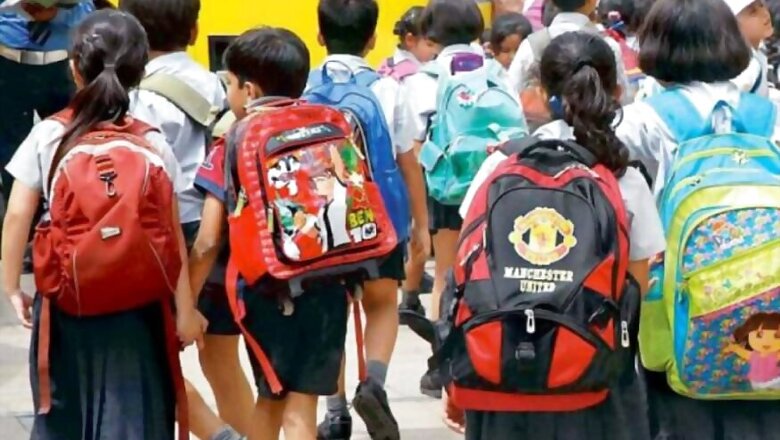
views
Keeping pace with the changing world order, India has taken significant strides towards making the teaching-learning process more contextual and accessible. In 2015, the central government established a wide range of online learning platforms. As a result, we have witnessed large-scale acceptance and phenomenal increase in the use of online learning resources. During the period of COVID-19 pandemic, the learning community swiftly shifted to the e-learning resources made available by the government through various platforms.
The outbreak of the pandemic resulted in the closure of institutions and suspension of offline classes and lab activities. The present circumstances posed a serious challenge before the institutions to continue the academic activities, particularly in such cases where the students do not have the internet access and adequate technical support to connect them with the institutional learning management systems. In such a situation, the educational administrators may find it difficult to achieve the well-defined objectives of education— Access, Equity and Quality, but in Indian context, SWAYAM, MOOCs Portal, National Digital Library, Virtual Lab Applications hosted by MHRD, IRINS, e-YATRA, FOSSEE and E-PG Pathshala provided a ready solution to the learners aspiring to continue the teaching-learning activities, ceaselessly.
Swayam Prabha is a unique initiative of the government to facilitate uninterrupted access to education for remotely located students. It is believed that the essence of India resides in its villages, and Swayam Prabha is the medium through which the soul of India gets enlightened.
If we go by statistics, 1,44,97,179 viewers accessed this platform in the year 2019 and during the lockdown period itself, it was viewed 32,53,707 times. It testifies the farsightedness of the government and the ability of the learners for optimum utilisation of available resources. The move bridged the gap between privileged and underprivileged learners during adverse circumstances, and helped the remotely located learners to connect with mainstream educational activities.
It is pertinent to mention here that educational satellites play a vital role in dissemination of education in each and every corner of the country. Remaining committed to ‘education for all’, the central government consolidated its efforts before and during the lockdown period to develop robust satellite-based delivery programmes.
India launched its first educational Satellite – EDUSAT in 2004 as an experiment towards connecting with the remote learners. In 2015, Swayam Prabha was launched with the support of GSAT-15 which gave a major push to the satellite-driven educational delivery programmes. It provided better bandwidth for Direct to Home (DTH) and VSAT Services. It is an ambitious project of the government to enable the learners to enjoy the learning imparted by the experts from prestigious educational institutions of the country. It could be possible with incessant efforts of MHRD.
The project offers 24x7 high quality educational programmes for various segments of learners through 32 DTH channels supported by GSAT-15 satellite. These channels are freely available on DD free Dish and DishTV (ZEE) and monitored by SWAYAM PRABHA web portal of INFLIBNET Centre – ([http://www.swayamprabha.gov.in)/]http://www.swayamprabha.gov.in).
The initiative was launched with an objective of imparting quality education and training to the learners. Besides, it also provides resources for competitive examination. To achieve the objective of inclusive education, there is a dedicated channel for hearing-impaired learners also. SWAYAM PRABHA channels provide the contents and e-resources prepared and designed under the banner of NCERT, NPTEL, IIT, UGC, CEC, IGNOU and NIOS. As a special feature, the video contents may be searched subject-wise and channel-wise, and there is a special mobile app to make it user-friendly.
Under the leadership of Dr. Ramesh Pokhriyal 'Nishank' during the lockdown period, the students were offered online education through Swayam Prabha channels. Also, the learners/users are being trained through special training sessions, five times a day. It is undoubtedly a remarkable programme started by MHRD. The government has also entered into MOU with the private DTH operators like Tata Sky and Airtel for telecast of educational video contents for the benefit of all the aspiring learners.
Central University of Haryana has institutionalised the mechanism of Swayam Prabha telecasts for the larger use of the students and teachers. The University has created the facility of DTH telecast in a special conference room of Central Library. In view of the relevance of the programmes for the students of various streams like engineering, Science, Social Science and Languages, the university has created separate facility in Engineering block also. On the basis of the outcome of the learning programmes offered by this platform it can be observed with conviction that it is a boon for the students located in the remotest parts of the country.
It is an endeavour of the government to reach to the underprivileged students who aspire for education, and this vision is being achieved by adopting alternative modes and means. Today, internet access has become a necessity to enable the students of cities, towns and villages to access education without discrimination, but uninterrupted access of internet in remote areas may take some more time.
In the meantime, satellite based education for remotely located students is being practiced in India with rigour and vigour. The initiative is one of the landmark achievements of the government which has made it possible to cover the uncovered learner-base. It has become the most potential tools to mitigate the gap between the rural and urban learners. With such sublime achievements in challenging times, it won’t be wrong to say that the initiative has proved itself as a means to reach to the soul of the nation.




















Comments
0 comment